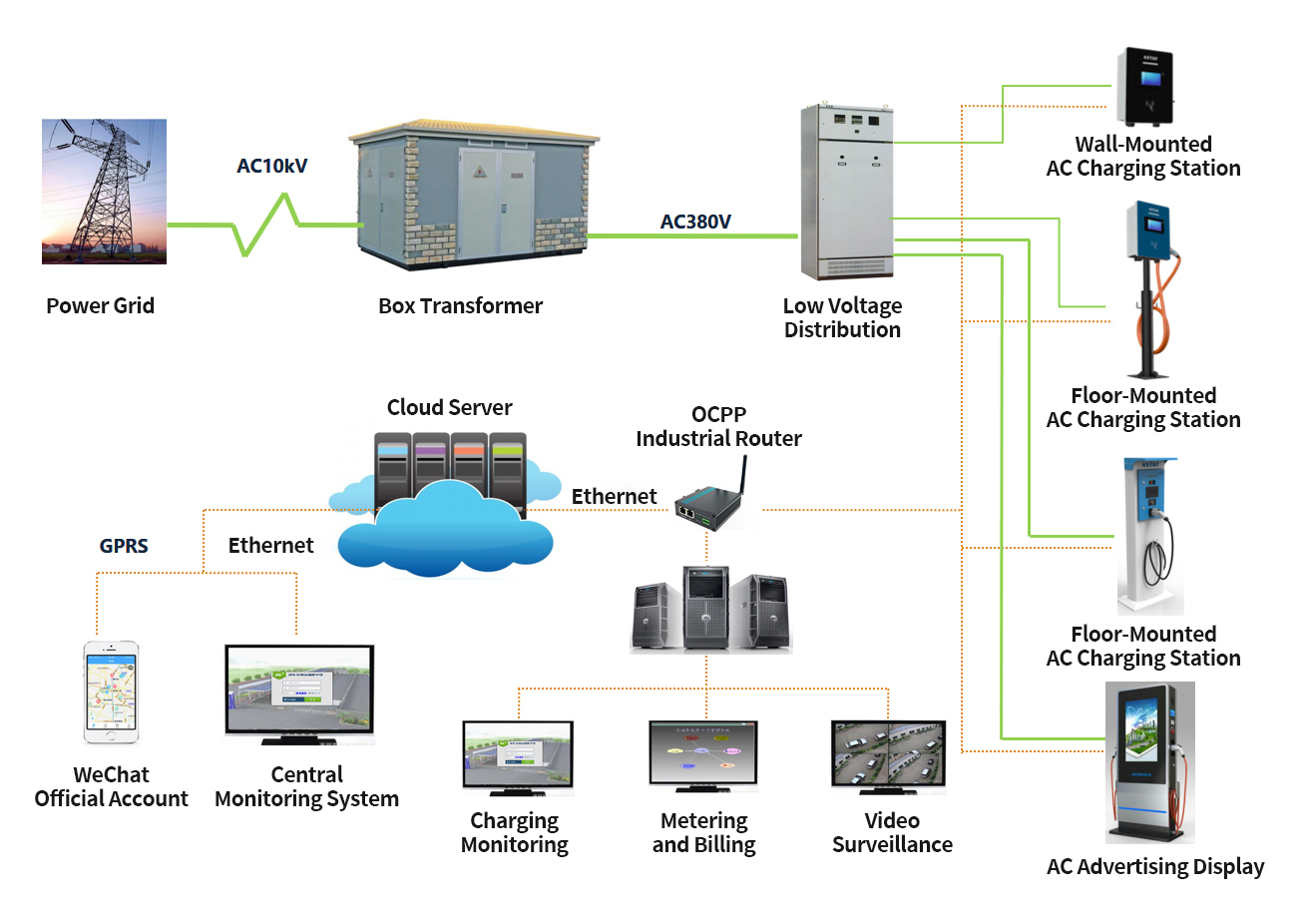
System Topology of European Standard EV Charger Operators
As electric vehicles (EVs) become increasingly popular, the construction of charging infrastructure has become crucial. In Europe, the standards for EV chargers are typically set by the International Electrotechnical Commission (IEC) and the European Committee for Electrotechnical Standardization (CENELEC). These standards ensure the safety, efficiency, and interoperability of charging facilities. This article will provide a detailed introduction to the key components of the system topology for European standard EV charger operators: the Charging Station (EVSE), Power Supply Unit, Control and Communication System, and User Interface.

Charging Station (EVSE)
Functions and Structure
The Charging Station, or Electric Vehicle Supply Equipment (EVSE), serves as the interface between the power grid and the electric vehicle. Its main functions include:
Power Transmission: Transfers electricity from the grid to the electric vehicle.
Safety Protection: Equipped with overcurrent and overvoltage protection devices to ensure charging safety.
Communication Module: Facilitates data exchange with the vehicle and central management system, supporting authentication, billing, and charging management.
Types
AC Charging Stations: Typically use Type 2 connectors, suitable for medium-speed charging at homes and public locations.
DC Fast Charging Stations: Use CCS Combo 2 connectors to provide fast charging services, ideal for highway service areas and urban fast charging stations.
Power Supply Unit
Functions
The Power Supply Unit is responsible for converting and regulating the input power to match the voltage and current requirements of the electric vehicle’s battery. It mainly includes:
Transformer: Adjusts the voltage to a suitable level for charging.
Rectifier: Converts AC to DC power (used in DC fast charging stations).
Voltage Regulator: Ensures the stability of output voltage and current.
Importance
The efficiency and stability of the Power Supply Unit directly affect charging speed and safety. Therefore, designing an efficient and reliable power supply unit is a key aspect of charging station construction.
Control and Communication System
Main Functions
The Control and Communication System is the “brain” of the charging station, responsible for managing and coordinating the charging process. Its functions include:
Vehicle Identification and Authentication: Identifies vehicles and performs user authentication through protocols like ISO 15118.
Charging Process Management: Monitors charging status and adjusts charging power.
Data Communication: Exchanges data with the central management system, supporting remote monitoring and fault diagnosis.
Communication Protocols
OCPP (Open Charge Point Protocol): Used for communication between charging stations and the central management system, supporting multi-operator interoperability. In DC operation piles, an OCPP router typically meets functional needs.
ISO 15118: Supports intelligent communication between vehicles and the grid, including plug-and-charge and smart charging functions.
User Interface
Functions and Design
The User Interface is the direct window for user interaction with the charging station. Its design should be simple and user-friendly, with main functions including:
Information Display: Provides information on charging status, remaining time, and costs.
Payment Functionality: Supports various payment methods, such as credit cards and mobile payments.
Fault Alerts: Provides clear fault information to enable quick user response.
User Experience
A well-designed User Interface can significantly enhance user experience, increasing user satisfaction and frequency of use. Therefore, operators should fully consider user needs and habits when designing the User Interface.
Conclusion
The components of the system topology for European standard EV charger operators together form an efficient, safe, and user-friendly charging network. As technology advances and the electric vehicle market expands, these systems will continue to be optimized and upgraded to meet future needs. A good OCPP router not only ensures stable network connectivity for operation piles and secure data transmission to protect user privacy but also facilitates efficient communication between EV chargers and the EV charger operation management backend. This translation maintains the original content and structure, providing a comprehensive overview of the system topology for European standard EV charger operators.